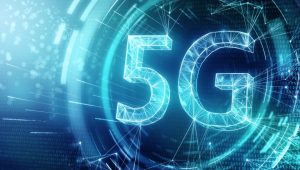According to Accenture, telecommunication carriers are expected to spend $275 billion to update their infrastructure with 5G technology. The fifth-generation in cellular technology is expected to deliver speeds up to 100 times faster than 4G and latency rate close to real-time. These stats suggest a tremendous potential for applications in healthcare, but the technology is still in its infancy.
The latest in cell tech offers versatility that spans three spectrum bands. Low frequency (less than one gigahertz) means that a signal can travel over longer distances but at slower speeds. Mid-range (1GHz to 6GHz) offers a balance of both distance and transmission rate while high-range (24GHz and higher) grants the greatest speed (10 gigabits per second) but at a shorter range.
Fifth-generation cellular services are going to require a significant investment – including updated network equipment and 5G-capable mobile devices. Current consumer hardware will not be compatible with the new technology and even when those options become available, it’s not likely they will operate at both low and high spectrum bands. Customers will need to evaluate their personal needs and pricing before settling on a product that is right for them.
Even with the potential of lightning-fast, low-latency speeds praised for making things like robotic surgery more common, the number of transmitter towers required to run the network will be significant. Couple this with the reality that transmission can be disrupted by something as simple as a double-paned window or a leafy tree means some challenges still need to be overcome. However, the promise that 5G networks can carry up to one million connected mobile devices at a time per square kilometer means that the capacity for supporting more clients far exceeds 4G's already tapped-out potential.
Despite certain limitations, there are many reasons to celebrate what 5G can do in healthcare. For example, remote patient monitoring can happen anywhere from an acute care unit to a patient's home. With a 5G network, it's possible that this monitoring could happen in real-time so that an emergency can be responded to at the moment. For example, an elderly patient may be able to live independently even with a health condition that would typically require closer observation.
Other healthcare tools that benefit from 5G include telehealth – a speedier connection means better quality video and audio for effective physician and patient communication. Also, image transmission on this new network will mean larger files can be sent between providers and facilities. Robotic surgery may have been around, but a faster system may mean these procedures become more common – especially over longer distances.
A final consideration has become a hot topic in recent months, with several theories surfacing about a link between 5G and COVID-19. A baseless rumor surfaced amongst some internet communities that causally linked the introduction of a 5G network to a particular area with the spread of the coronavirus. While this myth was quickly debunked, there are questions about what the electromagnetic radiation will mean for human health. There is currently no evidence to suggest that 5G technology is unsafe for people to be around. Human skin provides a reasonable barrier to higher frequency waves while the lower frequency can penetrate further but is not correlated with health concerns.























